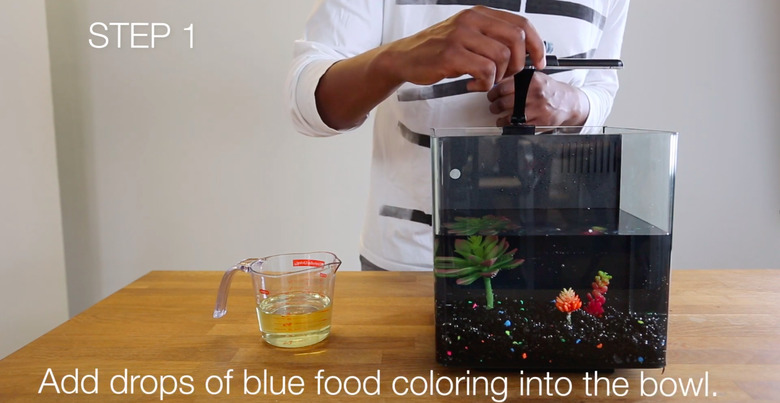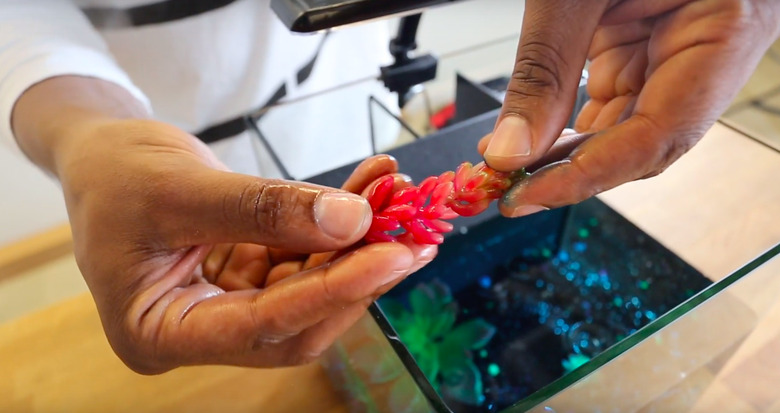School Projects On Pollution
Science-based school projects are an integral component of the National Science Education Standards, which educators use to develop curriculum for grades K through 12. Pollution is not only a multifaceted and versatile topic for a science project but is also socially relevant to today's environmental issues and efforts to "go green."
Grades K-4
Grades K-4
Author Susan Jindrich points out that "people remember things better when they learn them by doing," and this is especially true of young children. Discovery-based learning — that is, active, hands-on learning — is a popular instructional method in early education classrooms, and is highly adaptable for science-based pollution projects intended for young children, particularly through experimentation. Young children can create a simple pollution experiment on the effects of greenhouse gasses with two thermometers and a glass jar. Adult supervision is required due to the potential hazards of a broken thermometer or jar. Put both thermometers out in the sunlight, and cover one with a jar. Children can then record the temperature readouts every few minutes, noting the increase in temperature on the thermometer enclosed in the jar, which traps the heat similarly to the greenhouse effect.
To demonstrate the effects of acid rain, have children water two plants each day: Water one plant with regular water and water the second plant with a solution consisting of 1/4 cup water and one tablespoon of lemon juice. The plant watered with the lemon juice solution will begin to shrivel, demonstrating the effects of acid rain.
Grades 5-8: Oil Spill
Grades 5-8: Oil Spill
School projects on pollution that involve several steps are appropriate for this age group.
1. Create an "ocean" environment
To observe the polluting effects of an oil spill, fill a fish bowl 2/3 full with water. Add blue liquid food coloring and small, plastic fish tank plants to mimic the ocean.
2. Add the oil
Next, pour a few tablespoons of vegetable oil into the water, and note what happens to the oil. Does it disintegrate after a certain amount of time? How does it change the way the plastic plants feel when removed from the water? How do children's hands feel after removing them from the contaminated water?
Conduct this project in class as part of a presentation, or use it as a basis for a written report that details the experiment's findings.
High School
High School
A 1994 study published in Educational Researcher reveals that "a wide range of different research traditions relating to science education" share the idea that "knowledge is not transmitted from one knower to another, but is actively built up by the learner" from doing and experiencing. This is true of older students and even adults. For a sophisticated, hands-on pollution project, purchase several agar petri dishes from an educational supply store. Leave the dishes uncovered around different places of the house and backyard for a day or two, and then cover the dishes with the lids and allow them to sit at room temperature for another few days. Students will begin to notice different kinds of bacteria growing in the dishes, demonstrating the variety of pollutants in the air. Students can then write a report on the findings, comparing bacteria types to those depicted in textbooks or online resources.
Advanced Projects
Advanced Projects
Many educational stores and online retailers sell kid-friendly environmental and water test kits, which are easy to incorporate into an array of projects that examine pollution in the water, soil and air. Kids of all ages can monitor, record and then analyze the results of simple water, soil and air tests, incorporating findings in a school report, class presentation or science fair exhibit.
Cite This Article
MLA
Pachucki, Debra. "School Projects On Pollution" sciencing.com, https://www.sciencing.com/school-projects-pollution-7957315/. 17 May 2019.
APA
Pachucki, Debra. (2019, May 17). School Projects On Pollution. sciencing.com. Retrieved from https://www.sciencing.com/school-projects-pollution-7957315/
Chicago
Pachucki, Debra. School Projects On Pollution last modified August 30, 2022. https://www.sciencing.com/school-projects-pollution-7957315/


